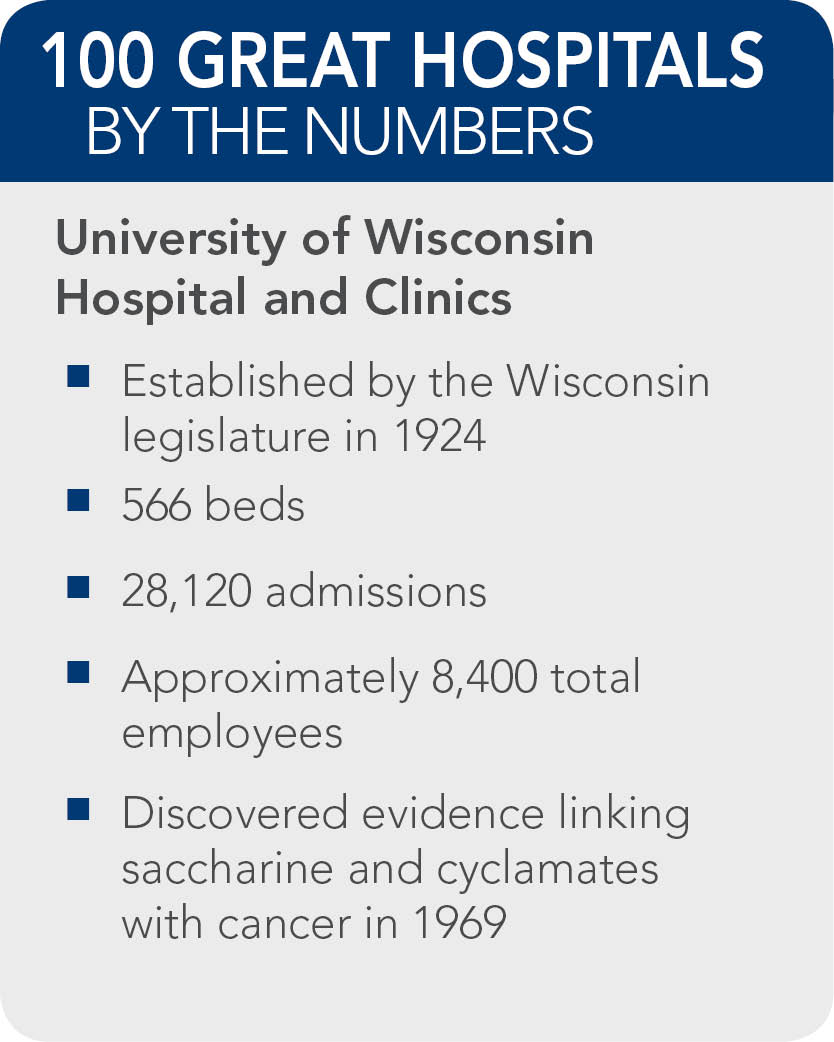University of Wisconsin Hospital and Clinics (Madison). The Wisconsin legislature established the 566-bed University of Wisconsin Hospital and Clinics in 1924, originally naming it Wisconsin General Hospital. The hospital has become a critical teaching facility in the Midwest, earning national recognition for its care and research.
 According to U.S. News & World Report, UW Hospital holds the top spot for overall care in Wisconsin. The facility is among the top 50 best hospitals in the country for nine specialties, including cancer. The University of Wisconsin Carbone Cancer Center, located within UW Hospital, is the only National Cancer Institute-designated comprehensive cancer center in Wisconsin. Adjacent to the Magnet facility is the American Family Children's Hospital, which U.S. News ranked among the top 50 hospitals in six pediatric specialties.
According to U.S. News & World Report, UW Hospital holds the top spot for overall care in Wisconsin. The facility is among the top 50 best hospitals in the country for nine specialties, including cancer. The University of Wisconsin Carbone Cancer Center, located within UW Hospital, is the only National Cancer Institute-designated comprehensive cancer center in Wisconsin. Adjacent to the Magnet facility is the American Family Children's Hospital, which U.S. News ranked among the top 50 hospitals in six pediatric specialties.
UW Hospital — which has roughly 8,400 employees and more than 1,200 UW Health physicians — has a long history for medical breakthroughs and discoveries. In the 1930s, Frederic Mohs, MD, developed the eponymous surgery technique to treat skin cancer while saving unaffected tissue. Three decades later, George Bryan, MD, discovered evidence that linked saccharine and cyclamates (which have since been banned) with cancer. UW Hospital physicians and researchers also found a method to predict the success of bone marrow transplants in 1968 and led a project that created functional human heart muscle cells from genetically reprogrammed skin cells in 2009.

 |
 |


